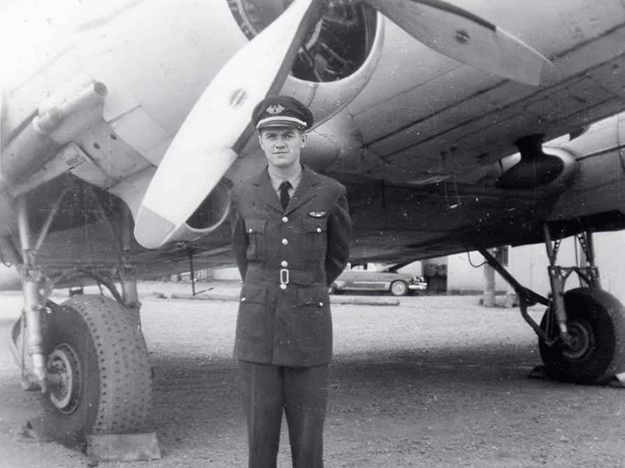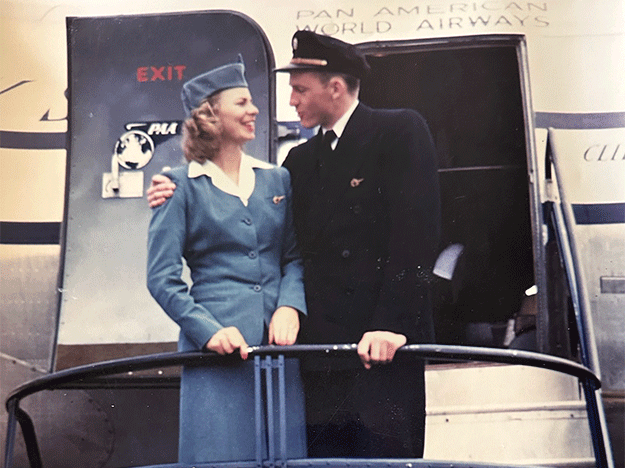The Story of Two Pilots Who Delivered Wings of Hope’s First Plane to Kenya
Thank you to Elizabeth Donovan (Bud Donovan’s widow), Courtney Lemus (Bud Donovan’s daughter) and Marianna Scheller (Jerry Fay’s daughter) for sharing their recollections of Bud Donovan and Jerry Fay and providing source material and photos for this story.
We trace the history of Wings of Hope to the delivery of a Piper Super Cub to a group of missionaries — and one flying nun — working in Kenya in the early 1960s.
Here is the story of two friends who helped raise the money for that first plane and coordinated its delivery to Nairobi in the spring of 1963.
It all started in 1962 when Pacific Northern Airlines Captain Jerry Fay learned that Bishop Joseph Houlihan of the Medical Missionaries of Mary was seeking an airplane to help deliver medicine, food and other supplies to famine-stricken communities in the Turkana desert in Kenya.
Fay approached his friend and fellow Pacific Northern Airlines pilot, Bud Donovan to join him in raising money for a Piper Super Cub. “Supplying the little plane to the good sisters wasn’t as easy as it sounds,” Fay wrote in his 1988 book, “From A-3 to A-10.”
In addition to securing the $11,000 to buy the plane — some $10,000 of which Fay paid out of his own pocket — getting the plane to Africa required shipping it in a crate to Norfolk, Va., where the U.S. Navy agreed to carry it by ship to Naples, Italy. From there, the U.S. Air Force would transport the aircraft in a large cargo plane to Addis Ababa, Ethiopia, where Donovan would be waiting to ferry the plane to its final destination in Nairobi, Kenya.
These carefully coordinated plans hit a few snags that almost derailed the entire effort. First, the Cuban Missile Crisis called the U.S. Navy ship into service, delaying the plane’s transport to Naples. Then, on the plane’s short stop in Ethiopia, local officials attempted to extort a $100,000 “transit tax” on the plane.
The journey’s success required the duo to implement what they called their Plan B, which Fay described in his book as, “If all else fails, get up early and get the hell outa town.”
That’s exactly what Donovan did when he learned of the bogus tax on the Super Cub, which he thought was a ploy by Ethiopian officials to impound the little plane and keep it for themselves.
Fay wrote of Donovan’s quick exit from Addis Ababa: “The following morning, he left the hotel at a very early hour, taxied to the small airport where the ship was tied down, and then, aided by friends who must forever go unnamed, readied the ship and … ‘got the hell outa town.’”
Not only did Donovan and Fay deliver the plane, they also built the landing strip for it which Fay described in a May 1975 Air Line Pilot magazine article: “I carved out a little airstrip, which wasn’t much of a project. But there was no hangar, no facilities, no gas, not a damn thing … It was starting from basic scratch.”
Elizabeth Donovan, Bud’s widow, said the two pilots complemented one another. At 6-foot-4, the 27-year-old Donovan was the more physical of the two. Fay, in his 40s, also worked on clearing the airstrip but was more adept at raising support and funds for the cause.
“They were a great team,” she said. “One was good at the physical part of the operation, and one was good at the organization. Jerry wrote the letters, and Bud built the runway.”
Both men shared a genuine love for helping people.
“They just did it from their heart. They wanted to help people — they didn’t want press or glory,” Elizabeth said.
Despite their humility around the work they were doing, they did receive press and an audience with and medal of recognition from Pope John XXIII.
Fay’s youngest, his daughter Marianna Scheller, recalls her dad being “generous to a fault.”
While she was too young to remember much of what her father did for the missionaries in Africa, Scheller, an Alaska Airlines captain, says he inspired her to be a pilot.
“He had a passion for aviation — for everything related to aviation — it just exuded out of him,” she said. “I would not be a pilot today if it weren’t for him.”
By the time Donovan and Fay decided it was time to leave Africa and return to their careers as pilots — Donovan was engaged to be married and Fay had a wife and six kids to get back to — Bishop Houlihan had enlisted St. Louis businessman, Bill Edwards, for help in raising money to send a second, more durable plane to support the missionaries in Kenya.
Elizabeth Donovan recalled that her husband and Fay “liked Bill Edwards a lot and knew he would do the right thing with the organization.”
“They didn’t want just anyone taking it over. They had a specific desire to grow Wings of Hope into an organization for everybody, not just Catholics,” she said.
Edwards engaged his friend Joe Fabick, president of Fabick Tractor Co., in the fundraising campaign. And the two men recruited George Haddaway, publisher of Flight magazine, and Paul Rodgers, vice president of Ozark Airlines, to join them in what was supposed to be a one-time effort to send another plane to Africa. But as more requests for help came in, Edwards, Fabick, Haddaway and Rodgers would eventually grow the effort Donovan and Fay had started into a nonprofit called Wings of Hope.
The rest, as they say, is history.
Captions: Jerry Fay & Wife (above) and Bud Donovan (below)


